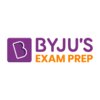
i
BYJU'S Exam Prep
Filter interviews by
BYJU'S Exam Prep Lead Data Analyst Interview Questions and Answers
BYJU'S Exam Prep Lead Data Analyst Interview Experiences
1 interview found
I applied via Recruitment Consulltant and was interviewed in Jan 2022. There was 1 interview round.
Interview Preparation Tips
- SQL
- Tableau
Top trending discussions






Interview questions from similar companies

I applied via Campus Placement and was interviewed before Dec 2020. There were 5 interview rounds.
Interview Questionnaire
2 Questions
- Q1. SQL questions
- Q2. Guestimates around sizing
- Ans.
Guestimates around sizing
Guestimates are rough estimates based on limited information
They are useful in situations where precise data is not available
Factors such as historical data, industry benchmarks, and expert opinions can be used to make guestimates
Guestimates should be clearly communicated as rough estimates and not taken as exact figures
Interview Preparation Tips

Interview Questionnaire
1 Question
- Q1. How do you measure growth of startup
- Ans.
Startup growth can be measured through various metrics such as revenue, user acquisition, market share, and customer satisfaction.
Revenue growth is a key metric for measuring startup growth. This can be tracked through sales figures, profit margins, and overall revenue growth rate.
User acquisition is another important metric. This can be measured through the number of new users acquired over a period of time, as well a...

I applied via Naukri.com and was interviewed before Sep 2021. There were 2 interview rounds.
Question was moderate.based on logical reasoning and math.
Coding test question based on sql and python.
Interview Preparation Tips

I applied via Referral and was interviewed in May 2024. There were 5 interview rounds.
(2 Questions)
- Q1. Question based on Window Functions in sql
- Q2. Order of execution
- Ans.
Order of execution refers to the sequence in which operations are carried out in a program or system.
Execution starts from the top of the program and moves downwards.
Operations within parentheses are executed first.
Multiplication and division are executed before addition and subtraction.
Functions are executed when they are called.
Control structures like loops and conditionals affect the order of execution.
(2 Questions)
- Q1. Write a sql query to find out different routes for a airline. Table has two columns which are destination and source
- Ans.
Use a SQL query to find different routes for an airline based on source and destination columns in a table.
Use a SELECT statement to retrieve the distinct combinations of source and destination.
Use the DISTINCT keyword to ensure only unique routes are returned.
Order the results by source and destination for easier analysis.
- Q2. Situational questions based on Business KPI
(1 Question)
- Q1. Simple discussion on the role and company culture
(1 Question)
- Q1. Case study question
(1 Question)
- Q1. Basic Discussion on relocation and interest in joining the company.
Interview Preparation Tips
Skills evaluated in this interview

(2 Questions)
- Q1. Tell me about yourself
- Ans.
I am a dedicated and detail-oriented analyst with a strong background in data analysis and problem-solving.
I have a Bachelor's degree in Statistics and have completed multiple data analysis projects during my studies.
I am proficient in using statistical software such as R and Python to analyze and interpret data.
I have experience in creating visualizations and reports to communicate findings to stakeholders.
I am a quic...
- Q2. Why do you join our company?
- Ans.
I am impressed by your company's innovative approach and strong reputation in the industry.
I am attracted to the company's commitment to innovation and cutting-edge technology.
I admire the company's strong reputation and track record of success.
I believe that the company's values align with my own professional goals and aspirations.

I applied via Recruitment Consulltant and was interviewed in Jan 2024. There were 3 interview rounds.
(1 Question)
- Q1. Technical questions mostly around sql, project based and few theoretical questions on python
(1 Question)
- Q1. This was one of the most grilled interview i have given, require moderate level of sql understanding, was asked to share screen and solve it , also i had show how it is working then basic questions of py...
(1 Question)
- Q1. Was asked basic HR questions
Interview Preparation Tips
- SQL
- Python
- Excel
- Case Studies

I applied via Naukri.com and was interviewed in Mar 2024. There were 2 interview rounds.
(1 Question)
- Q1. The first round was a basic telephonic interview. Then simple basic SQL questions and some question based on Normalisation and DBMS were asked.
(1 Question)
- Q1. This was the toughest Data Analyst Interview I have faced till now. Interview was of 1 hr. Required higher level of SQL understanding. Asked to share screen and then solve SQL queries. Question based on jo...

I applied via Naukri.com and was interviewed in Dec 2023. There was 1 interview round.
(2 Questions)
- Q1. Asked about the Statistics concepts hypothesis,pvalue,mean,meadian.mode,normaldistrubution?
- Q2. Sql joins questions based on three tables, complex joins
Interview Preparation Tips
- Statistics
- SQL
- joins

(2 Questions)
- Q1. Technical questions from hiring manager
- Q2. Reason for company change
- Ans.
Seeking new challenges and growth opportunities in a different environment.
Desire for career advancement
Seeking new challenges
Change in company culture or values
Relocation
Better work-life balance
BYJU'S Exam Prep Interview FAQs
Tell us how to improve this page.
BYJU'S Exam Prep Interviews By Designations
- BYJU'S Exam Prep Business Development Associate Interview Questions
- BYJU'S Exam Prep Academic Counsellor Interview Questions
- BYJU'S Exam Prep Senior Business Development Associate Interview Questions
- BYJU'S Exam Prep Content Writer Interview Questions
- BYJU'S Exam Prep Business Analyst Interview Questions
- BYJU'S Exam Prep Cashier Interview Questions
- BYJU'S Exam Prep Freelance Content Writer Interview Questions
- BYJU'S Exam Prep Associate Interview Questions
- Show more
Interview Questions for Popular Designations
- Data Scientist Interview Questions
- Senior Data Analyst Interview Questions
- Senior Data Scientist Interview Questions
- Data Science Intern Interview Questions
- Data Analyst Intern Interview Questions
- Lead Data Scientist Interview Questions
- Jr. Data Scientist Interview Questions
- Associate Data Scientist Interview Questions
- Show more
Interview Questions from Similar Companies
|
Senior Associate
58
salaries
| ₹3.8 L/yr - ₹7.3 L/yr |
|
Associate Manager
43
salaries
| ₹4 L/yr - ₹10 L/yr |
|
Senior Business Development Associate
40
salaries
| ₹4 L/yr - ₹10 L/yr |
|
Business Development Manager
36
salaries
| ₹5.2 L/yr - ₹14 L/yr |
|
Senior Academic Counsellor
34
salaries
| ₹4.2 L/yr - ₹8.4 L/yr |

Whitehat jr

Unacademy

Extramarks Education

upGrad
- Home >
- Interviews >
- BYJU'S Exam Prep Interview Questions >
- BYJU'S Exam Prep Lead Data Analyst Interview Questions








